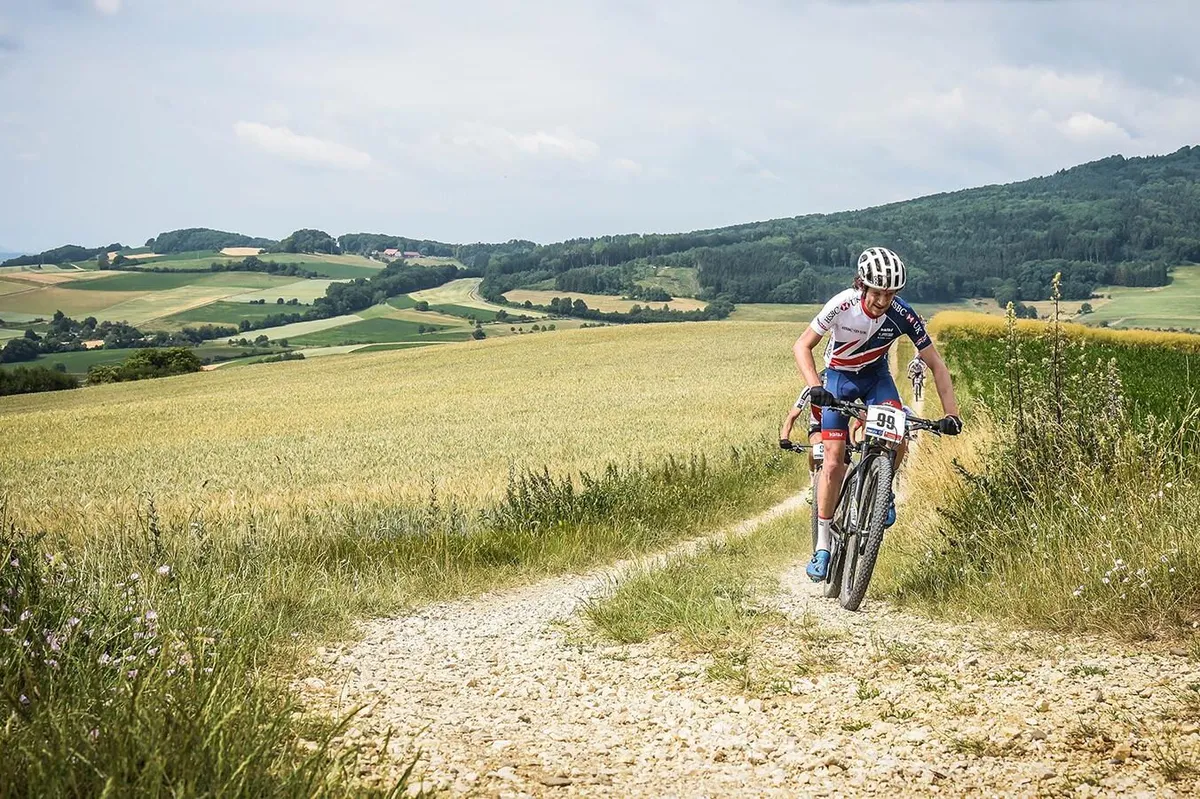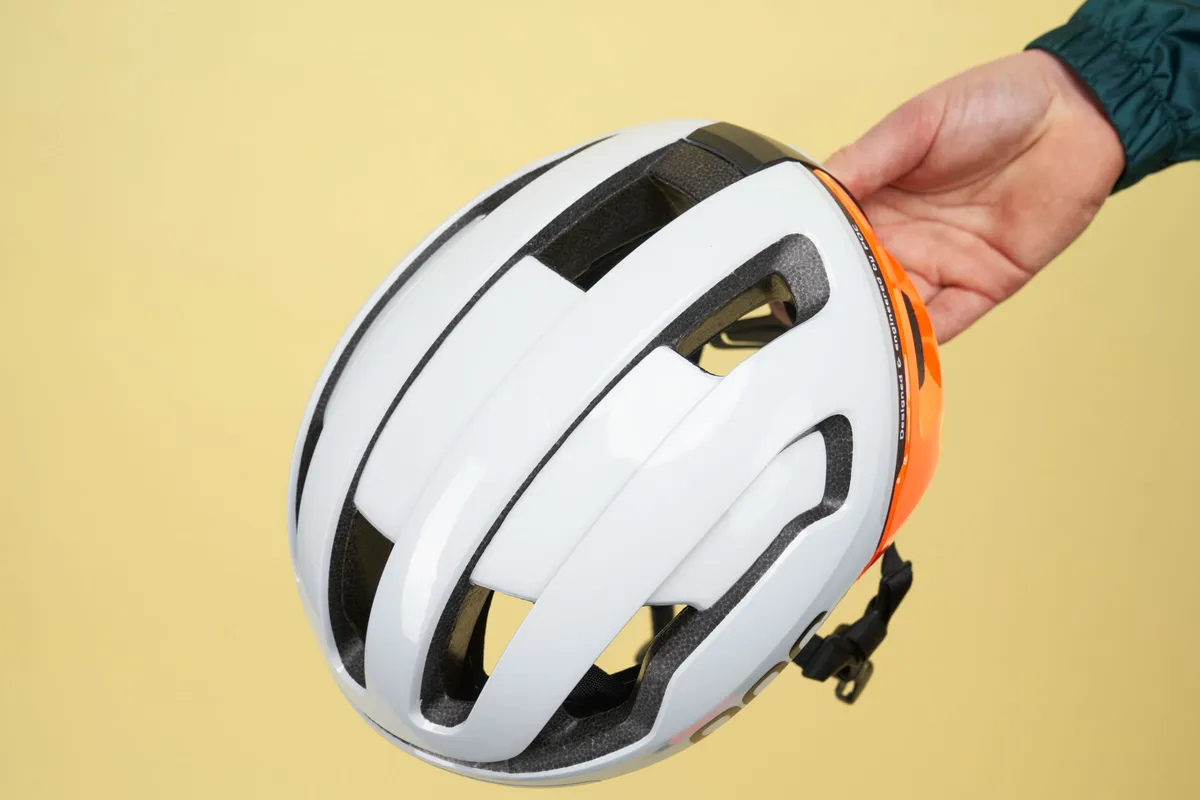Cross-country racing is a true test of a rider’s fitness, skills and mental fortitude.
As one of the oldest race disciplines in mountain biking, cross-country is often thought of as the geeky older sibling to downhill and enduro racing.
However, XC racing has recently seen its stock rise, with the advent of tougher tracks, incredible bike tech and tight racing action.
But what exactly is cross-country racing? Why do we think it’s so good? How can you have a go at XC racing? And what do you need to get started? Read on to find out.
What is cross-country mountain bike racing?

Olympic cross-country
Unlike downhill or enduro racing, modern Olympic cross-country racing (often known as XCO) is a mass start event, where riders complete laps of a track. This is perfect for spectators, or any family and friends you have coming along to watch, because they get to see the riders multiple times.
A typically cross-country race track will usually consist of some climbing, descending and flatter singletrack sections. Lap length will vary from race to race, but 4 to 5km per lap is fairly common.
Each race will have a set number of laps and first across the line wins. The number of laps you complete will depend on your age and experience. Top elite riders will do the most laps, normally six to eight, with the total race duration being around 90 minutes. Beginner, or younger riders will do fewer laps, with races lasting anywhere from 30 to 80 minutes.
There are usually two technical/feed zones on the course, and this is where riders can receive mechanic assistance. For example, replace/fix a flat tyre, or grab bottles and race food as they fly by.

These zones are the only places riders can receive assistance on course, so if you happen to get an unfortunate puncture just after a technical area, you will have to walk (or jog, if you’re very fit) all the way to the next technical zone.
As you’d expect, the first rider across the line is the winner, and in certain races, top placings allow riders to collect ranking points. Once enough ranking points have been acquired, a rider can move up to the next category, where the races will be longer, with a more competitive field.
In the UK, the British Cycling category system for adults starts with Sport, then moves up to Expert and finishes with Elite.
Marathon events

Marathon events are mass start races just like Olympic cross-country, but take place over much longer distances. This can be anywhere from 40km, all the way up to 140km for the toughest events.
Once again, the course will consist of a mix of climbing, descending and flatter singletrack. However, due to the extended nature of the course, these climbs and descents can sometimes be much longer – anywhere up to an hour if you’re racing somewhere like the Alps.
Marathon races normally consist of a single lap, but sometimes races can take place over a number of mid-distance laps, for example, three 30km laps for a total of 90km.
Just like shorter XCO events, there will be technical/feed zones where you can stock up on food, drink and deal with any mechanical issues. Although, because XC marathons cover longer distances, riders will usually be more self-sufficient and carry some spares with them.
What’s so good about cross-country racing?

Cross-country racing is a true test of your all-round ability as a mountain biker. Not only do you need to be able to deal with descents, you also need to be fit enough to race full gas up the climbs at the same time. Some mountain bike training won't go amiss.
Participating in XC races is incredibly exciting because you race elbow-to-elbow with other riders. And while the starts can be a little nerve-wracking, once you’re in the mid-race groove, the field starts to spread out and relax a bit.

Cross-country can have a reputation as being a fairly ‘serious’ discipline, but from BikeRadar’s experience, we’ve found the scene to be incredibly friendly and inclusive, especially at local events.
Riders are always happy to give some pre-race advice, and it’s not uncommon to see families racing in different categories throughout a race weekend.
Finally, cross-country races can take you to some beautiful and scenic places, so you never know where you may end up if you start to branch out beyond your local events.
What type of bike do you need for cross-country racing?

At the beginner level, you can use any mountain bike in good working order for cross-country racing.
So if you have a trail bike or enduro bike and fancy dabbling, you can turn up, pay your money and race. (It’s always worth checking with the organiser if you need any extra documentation before you do turn up).
Granted, a trail bike won't be as fast an XC race bike, but it’s the perfect way to give the discipline a try before you commit to upgrading your equipment.
Hardtail vs full-suspension

For riders looking to buy a proper cross-country bike for XC racing, there are two options: a hardtail mountain bike or a full-suspension mountain bike.
We’ll quickly cover the pros and cons of both here, but for more information read our dedicated in-depth buyer’s guide to cross-country mountain bikes.
A hardtail only has suspension at the front, combining that suspension fork with a rigid rear. Hardtails are usually lighter and easier to maintain because there’s no complicated rear shock to worry about.
They’re also often more affordable than a full-suspension bike of the same spec.

A full-suspension bike has suspension at the front and rear, combining a suspension fork at the front with a shock at the rear. This makes them more efficient – and confidence-inspiring – when descending compared to hardtails, while also being more comfortable.
The downside is the extra suspension adds weight and they need more time/money when it comes to maintenance.
What works best for you will mostly depend on where and what you like to ride, coupled with your experience level.

If you enjoy riding and racing on technical terrain, then a full-suspension bike could be the way to go.
If you like smoother, less technical riding with lots of climbing, then perhaps consider a hardtail.
Budget has a part to play, too. Riders with a bigger budget will normally choose a full-suspension bike, whereas those looking for more affordable options will probably be best-suited to a hardtail.
However, it’s worth bearing in mind that while the bike can make a small difference when racing, what really counts is your fitness and skill level, so don’t get too hung up on what type of bike you have. The best riders can be equally effective on both.
What else do you need for cross-country racing?

Again, at a beginner level, you don’t need much for cross-country racing. A regular bike helmet and cycling gear you’re comfortable riding in will be fine for a first try.
As things get more competitive, you may want to dip your toe into the world of clipless pedals and shoes, Lycra clothing and XC-style helmets.

These are all designed to make you a bit faster, more comfortable and more efficient, which will hopefully get you higher up the leaderboard.
As we said before, your fitness and skills on the bike will ultimately decide where you finish.
Race spares

In terms of spares, it’s a good idea to take your usual travel-size tool kit or saddle bag to a race. This should help with any minor mechanical issues you have on the day.
During the actual race, many riders also carry a CO2 canister or mini-pump, just in case they get a slow puncture.
Also, don’t forget a few energy gels or your preferred source of carbohydrates because you’ll be burning lots of calories throughout the race.
Racing licence
Finally, if you want to race in an event organised by your home country's federation, then you may well need a racing licence. In the UK, you can find more information about racing licences on the British Cycling website.
At smaller races, you may not need a race licence, but it’s always best to check before you turn up on the day.
Where can you find XC races near you?

In the UK, British Cycling is the best place to start. You can find more information on the British Cycling website. The menu allows you to filter the location and type of race you’re after.
Smaller, local races may have their own websites or Facebook pages, so a quick search for events in your area may do the trick. If not, ask at a local bike shop, or perhaps talk to some local XC riders to see what’s about.
All that’s left now is to sign-up and get started.
